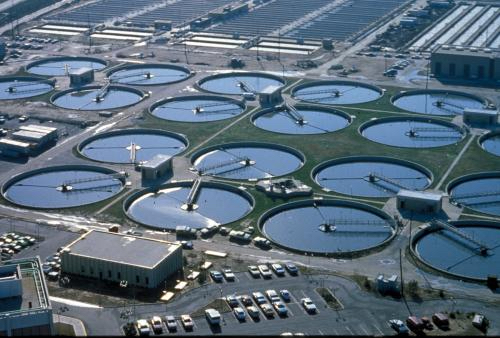Have a story idea
Have a story idea? Send it to us here.

Source : Flickr Sewage treatment plant
January 4, 2024
Author : Alex Bustillos
In a landmark initiative for environmental stewardship and public health, Wisconsin is taking decisive action to revitalize its water infrastructure. Governor Tony Evers, collaborating closely with the state's Department of Natural Resources (DNR), unveiled on December 13 a historic investment of $414.4 million.
This unprecedented funding, channeled through the Clean Water Fund program, is set to benefit 84 statewide municipalities. This move represents a financial commitment and a profound dedication to sustainable water management and quality enhancement in Wisconsin.
The Clean Water Fund program, a pillar of Wisconsin's environmental efforts since 1991, has been a critical source of support for municipalities tackling water infrastructure challenges. To date, it has injected over $5.5 billion into local projects, significantly impacting communities' abilities to manage water resources effectively.
This program's sustained focus on crucial projects like sewer replacements and wastewater treatment facility upgrades has been pivotal in advancing Wisconsin's commitment to environmental health and public safety.
The current allocation of $414.4 million is a record-breaking amount, reflecting both the urgency and the importance of water infrastructure in the state. This funding is poised to make a substantial impact with an emphasis on projects that address phosphorus discharges and upgrade aging equipment.
It is not just the physical infrastructure that will see improvements; the program is keenly focused on elevating the quality of life in small and disadvantaged communities, ensuring that the benefits of these investments are felt across the state's diverse demographic landscape.
Governor Evers' remarks on this investment underscore its significance. By highlighting the dual focus on addressing current needs and preparing for future challenges, the Governor has laid out a responsive and forward-looking vision. The funding is about meeting today's demands and building resilience and adaptability into Wisconsin's water management systems for years to come.
A notable aspect of this initiative is its alignment with the broader national infrastructure plan under the Infrastructure Investment and Jobs Act. This fund allocates $50 billion for water, wastewater, and stormwater systems across the United States.
The tangible impacts of this investment will be seen in various municipalities. Among the municipalities set to benefit from this investment are:
These projects exemplify a strategic blend of addressing immediate concerns and laying a foundation for long-term sustainability and resilience.
The significance of this investment extends beyond the immediate environmental and infrastructural enhancements. It reflects a comprehensive understanding of the pivotal role that water management plays in public health, environmental conservation, and economic stability. By prioritizing these projects, Wisconsin is safeguarding its natural resources and reinforcing its commitment to the well-being of its residents.
Category : Public Works
